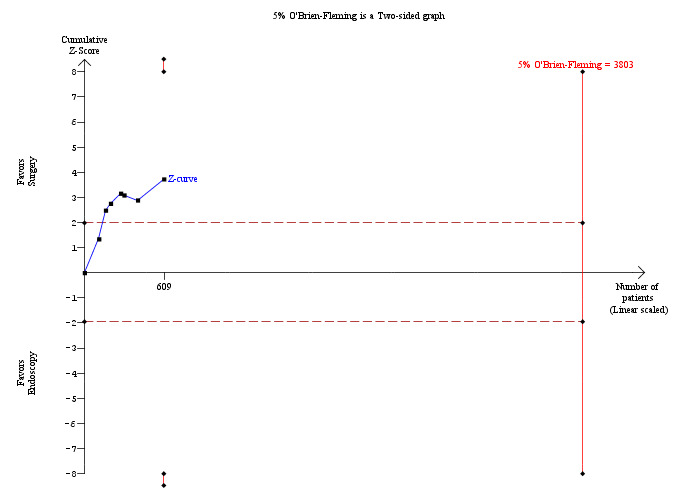6.

Trial sequential analysis of retained stones (open surgery versus endoscopic retrograde cholangio pancreatography (ERCP)) The diversity‐adjusted required information size (DARIS) was calculated to 3,803 patients, based on the proportion of patients in the control group with the outcome of 15.88%, a relative risk reduction of 20%, an alpha of 5%, a beta of 20%, and a diversity of 0%. After accruing a total of 609 participants in seven trials, only 16.01% of the DARIS has been reached. So, the futility area was not drawn. The cumulative Z‐curve (blue line) does not cross the trial sequential monitoring boundaries (red line) but crosses the conventional boundaries (etched red line). This suggests that although there is a statistically significant reduction in the proportion of people with retained stones in the open surgery group compared to the ERCP group, there is a high risk of random error and one cannot firmly conclude that open surgery has significantly lower retained stones proportion compared to the ERCP group.
